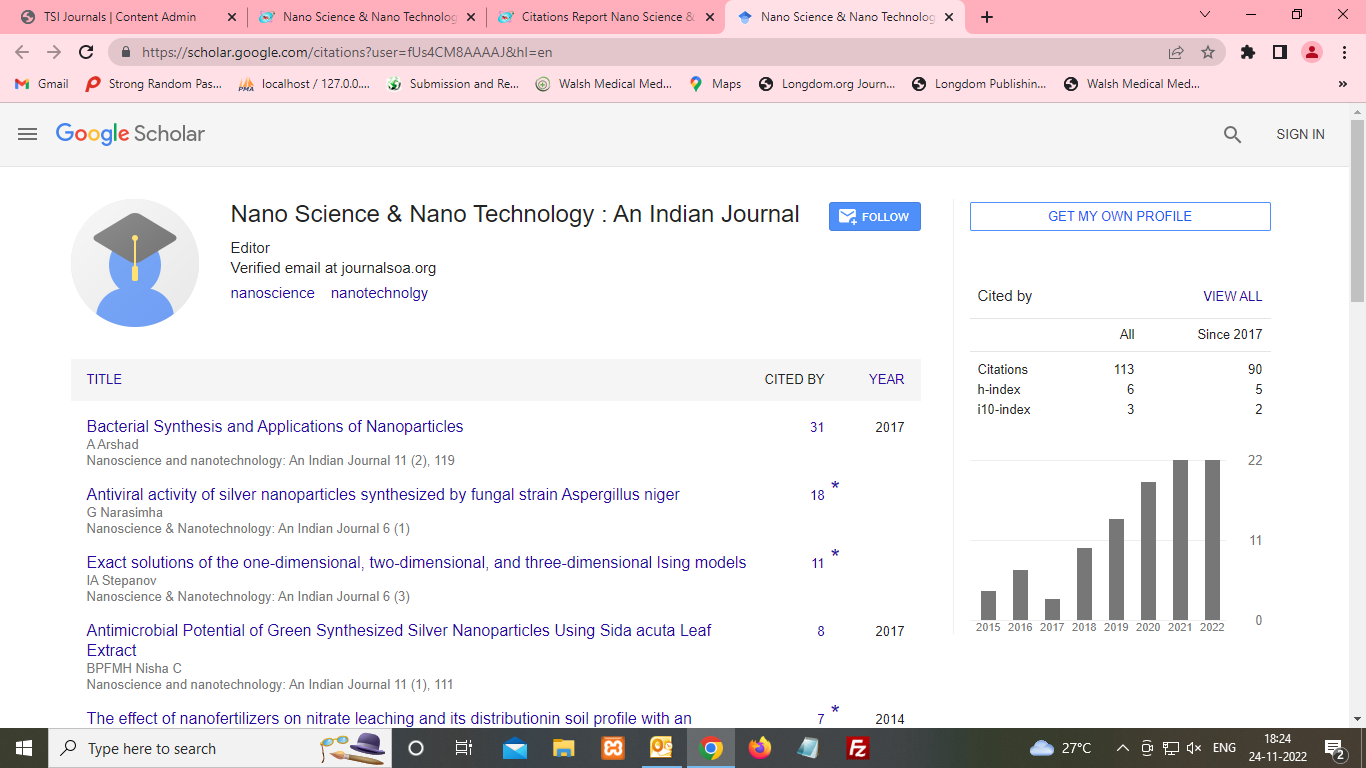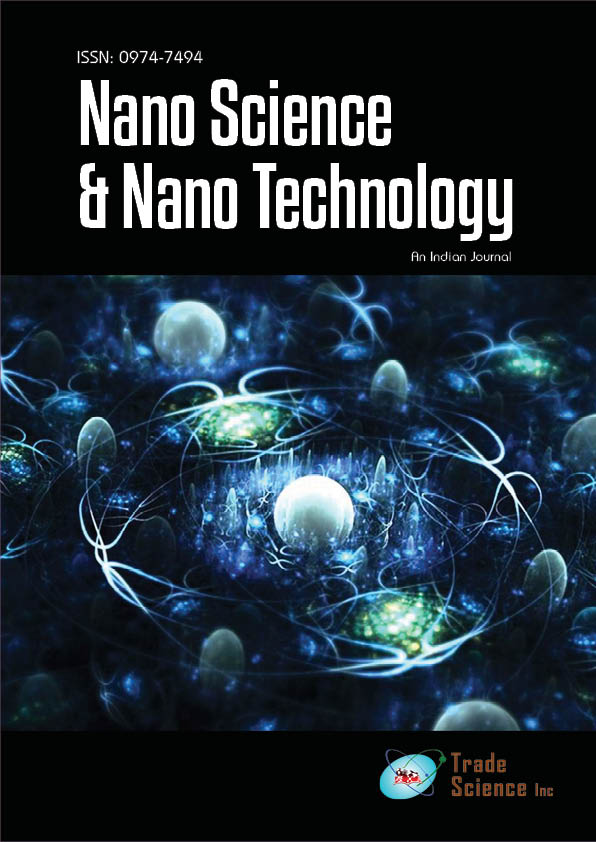Current opinion
, Volume: 16( 4) DOI: 10.37532/ 0974-7419.2022.16(4).158Nanotechnology used in the production of food
Citation: Rai V, Nanotechnology used in the production of food. Nano Tech Nano Sci Ind J. 2022; 16(4):158
Abstract
A developing technology is food nanotechnology. The twenty-first century's new frontiers are nanoscience and nanotechnology. Their uses in agriculture and food are relatively young compared to their use in pharmaceuticals and the delivery of medical care. Nanotechnology has been predicted by several scientists and engineers to take over the food industry in the twenty-first century. Even though there aren't many actual uses of food nanotechnology, several fundamental concepts have been thoroughly tested. Food Nano sensing and food nanostructured components are anticipated to be two important applications of nanotechnology in the field of food engineering. In the former area, nanotechnology can be employed to enhance the evaluation of food quality and safety. Nanotechnology has the potential to be used in food applications, and this promise will be realized through developments in technologies like DNA microarrays, micro-electromechanical systems, and microfluidics
Introduction
A developing technology is food nanotechnology. The twenty-first century's new frontiers are nanoscience and nanotechnology. Their uses in agriculture and food are relatively young compared to their use in pharmaceuticals and the delivery of medical care. Nanotechnology has been predicted by several scientists and engineers to take over the food industry in the twenty-first century. Even though there aren't many actual uses of food nanotechnology, several fundamental concepts have been thoroughly tested. Food Nano sensing and food nanostructured components are anticipated to be two important applications of nanotechnology in the field of food engineering. In the former area, nanotechnology can be employed to enhance the evaluation of food quality and safety. Nanotechnology has the potential to be used in food applications, and this promise will be realized through developments in technologies like DNA microarrays, micro-electromechanical systems, and microfluidics.
Smart nutrient delivery, bio separation of proteins, quick sampling of biological and chemical contaminants, Nano encapsulation of nutraceuticals, solubilization, delivery, and colour in food systems are just a few of the emerging nanotechnology for food and agriculture topics that can significantly improve food processing.
Food nanotechnology, on the other hand, needs to be evaluated for both potential positive and negative effects because it is a unique technology. Because the science of manipulating nanoparticles for various purposes is known as nanotechnology. It contributes to crop improvement, enhancing food quality and safety, and increasing human health in novel and creative ways, playing a significant role in the food and agricultural industries. Due to their distinctive physical, chemical, and biological properties with large surfacevolume ratios, altered solubility, and toxicity when compared to their macroscale counterparts, engineered nanometer-sized particles have attracted more attention in the medical field, agro-food industries, sewage water treatment, and other industries. Silver, gold, zinc oxide, titanium dioxide, and carbon nanoparticles are produced ten times more frequently than other nanomaterials due to their potential antibacterial qualities and are used in air filters, food storage containers, deodorants, and other products.
Opportunities
Since various phenomena have already been identified and employed in the formulation, production, and processing of nutraceuticals and functional foods, the nanoscale is not a novel concept to the food and beverage sector. For instance, colloidal science has long been utilized to enhance food items. Numerous foods and beverages contain nanoscale components, and during processing (for instance, dairy), naturally occurring nanoparticles are modified. However, novel uses for improved capabilities and effective food and beverage delivery methods have only recently been researched
Food processing with nanotechnology
Food that has been manufactured, processed, secured, and packed using nanotechnology is referred to as Nano food. Nanotechnology holds tremendous possibilities for post-harvest food processing. It alters particle size, size distribution, cluster formation potential, and surface charge to enhance food bioavailability, taste, texture, and consistency, or to cover up an offensive odour or taste. Meat, fruits, vegetables, cheese, fast food, baked goods, and confectionery products can all use edible Nano-coatings (thin coatings of 5 nm) as moisture and gas barriers. Additionally, they add flavor, colour, enzymes, antioxidants, anti-browning agents, and a longer shelf life to produced goods.
Food contain nanomaterials: Toxicology aspects
The field of nanotechnology is growing, and along with it, public worry about the toxicity of nanomaterials and their effects on the environment is growing.
Nanoparticle-mediated toxicity is influenced by dynamic, kinetic, catalytic, functionalization, net particle reactivity, agglomeration, and the functional environment. Despite the fact that nanoparticles on the surface of the packaging material are not harmful to people, their transfer and integration into food may have an effect on people's health.
Packaging food using nanotechnology
About 55% to 65% of the $130 billion spent on food and beverage packaging in the US was for food and beverage packaging. In recent years, the use of active and intelligent packaging solutions in food products derived from muscles that are susceptible to infection has significantly increased.
Systems for active food packaging
Active packaging systems include moisture regulators, CO2 scavengers and emitters, oxygen scavengers, and antimicrobials. Active packaging solutions are developed with the storage objective in mind. The use of metallic-based nanocomposites in active food packaging is a possibility.

